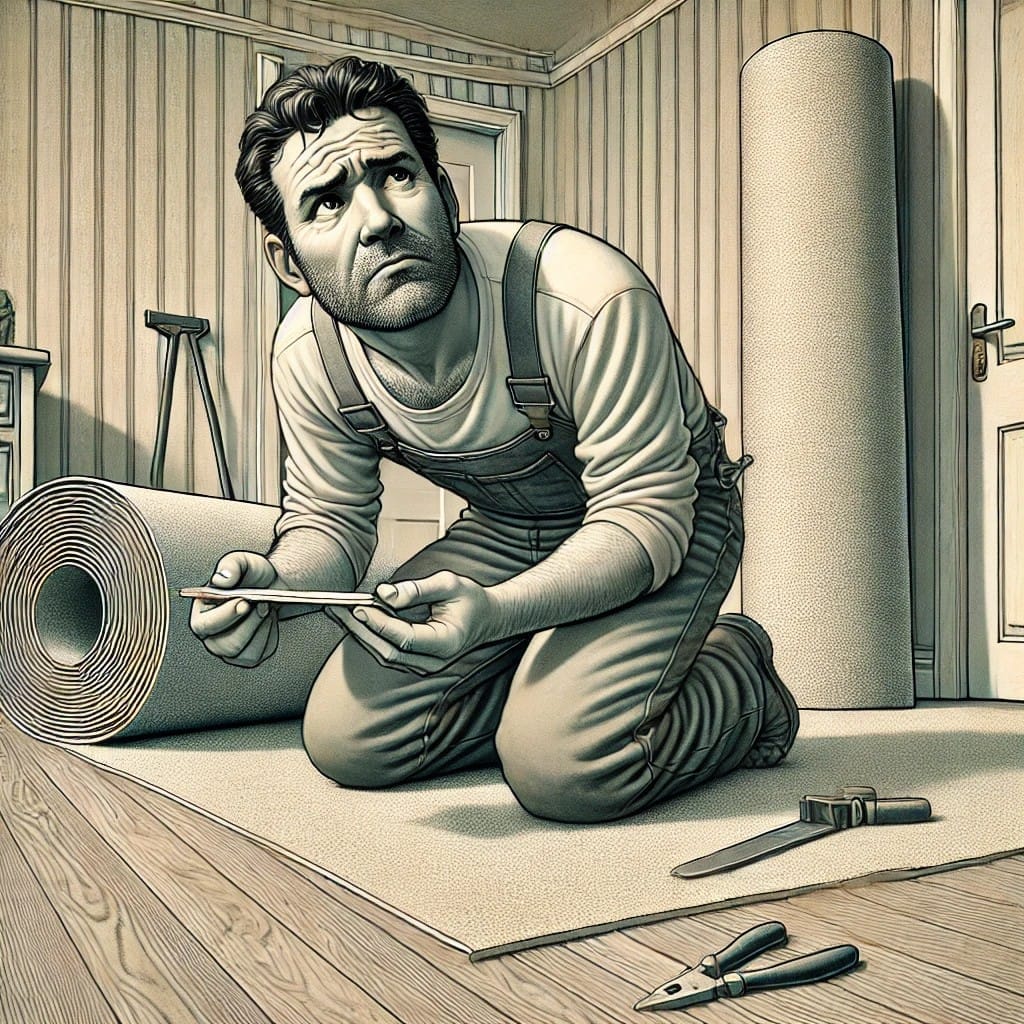Marmoleum flooring offers durability, eco-friendliness, and a beautiful finish, but fitting it is no simple task, often explaining the higher cost. This specialized linoleum flooring, composed of
natural materials like linseed oil and wood flour, limestone, rosin and jute has specific handling and installation requirements that add complexity at each stage. For reference here we are talking about Marmoleum but it is actually called Linoleum. Forbo branded the name Marmoleum but every other
manufacturer calls it linoleum. It is a Victorian invention.
Storage Challenges
One challenge with Marmoleum is storage. It’s essential to store the rolls upright, which, though
necessary, makes it difficult to rack in a warehouse, taking up more space and requiring extra care to prevent damage. The material is also highly brittle in roll form, prone to cracking or splitting during handling if not managed with care. Due to its natural components, Marmoleum has a limited shelf life; exposure to air can dry it out, compromising quality. These unique storage and handling requirements contribute to its overall cost and it also means that most companies will not keep
much of it in stock and if you order it may leave it until the last minute to place an order with the
manufacturer.
This means that at the time if you put your project back for any reason, when it comes to hitting the go switch again you might very find that the colour you wanted is no lobger available. This is something to consider. Sometimes it may be a good idea to order the lino and store it in your own property until it is needed and then make sure that you start that project before six months passes.
Heavy and Dense Material
Marmoleum is incredibly dense, with a weight of around 2.9Kg per m2, so a typical 50 m² roll
weighs around 145KG. Its a dead weight making transportation and handling cumbersome.
Standard rolls are typically 2 meters wide, which ensures that seams are almost always present in
installations, requiring skilled handling to weld them seamlessly or more often than not ‘double cut’. Seam welding is particularly challenging with linoleum since it attracts dirt, especially in lighter shades, and can become visibly dirty over time, increasing cleaning and maintenance needs. It also makes the seams a contentious point in some installations because they can be very qualitative. Where someone may might not notice the seam for others that join might be quite jarring, so it is
important to manage expectations.
The Importance of a Flat Subfloor
Preparing the subfloor is critical for successful Linoleum and Marmoleum installation. Uneven
surfaces can ruin the final look, so extra steps are required to create an ideal foundation. Wooden floors, for example, require a high-grade plywood underlay, secured with coil nails. Over this, a 3mm latex screed is applied to level out any imperfections. Once the screed dries, it’s sanded to ensure a smooth surface before the Marmoleum can be laid down. Just the latex part is required for a concrete subfloor which makes that installation slightly cheaper. Either way building these subfloors is time-intensive. The flatness of the floor and quality of preparation will significantly impact the installation’s success, adding another layer of complexity and cost.
Finalizing and Cleaning
Marmoleum projects can appear unfinished until all steps are completed. The floor edges are often covered by skirting boards, giving the appearance of a rough finish until the final details are in place. Cleaning after installation is essential, as the flooring can accumulate dust and residues from the fitting process, which can affect the appearance until the end. It’s wise to reserve judgment on the final look until the entire project, including skirting and cleaning, is done.
The Payoff: A Beautiful, Long-lasting Floor
Despite the difficulties, once Marmoleum is fully installed, it is one of the most resilient and
visually appealing flooring options available. Known for its longevity and toughness, a well-fitted Marmoleum floor can last decades, making the upfront challenges worthwhile. This natural,
sustainable flooring provides a unique aesthetic and durability that add value to any space,
justifying the investment and effort required in installation. Probably the most popular range of
Marmoleum in the UK is the Forbo Marmoleum Concrete.
The complex process of handling, preparation, and finishing Marmoleum results in a high-quality, beautiful floor that stands the test of time, a testament to the craftsmanship involved and there is no better company to fit it than the expert marmoleum fitters at Cavendish deVere.





Leave a Reply